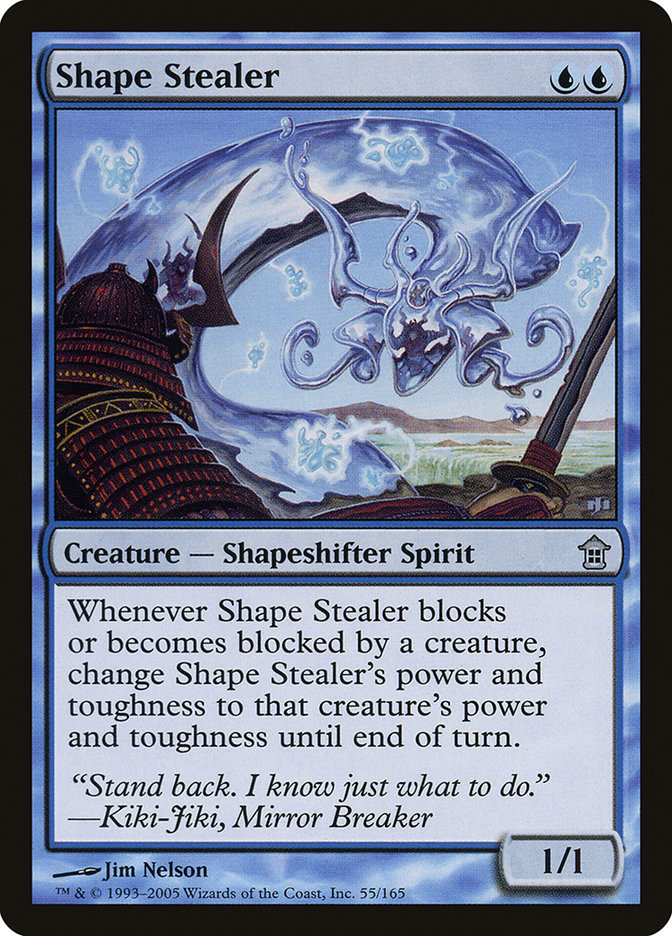
Shape Stealer {U}{U}
Creature — Shapeshifter Spirit
Whenever Shape Stealer blocks or becomes blocked by a creature, change Shape Stealer’s base power and toughness to that creature’s power and toughness until end of turn.
“Stand back. I know just what to do.”
—Kiki-Jiki, Mirror Breaker
1/1
Illustrated by Jim Nelson
- Standard
- Not Legal
- Alchemy
- Not Legal
- Pioneer
- Not Legal
- Explorer
- Not Legal
- Modern
- Legal
- Historic
- Not Legal
- Legacy
- Legal
- Brawl
- Not Legal
- Vintage
- Legal
- Timeless
- Not Legal
- Commander
- Legal
- Pauper
- Not Legal
- Oathbreaker
- Legal
- Penny
- Not Legal
Toolbox
Buy This Card
Notes and Rules Information for Shape Stealer:
- Once the ability resolves, changing the other creature’s power or toughness doesn’t affect Shape Stealer. (2005-06-01)
- This ability triggers once for each creature blocked by or blocking Shape Stealer. If multiple creatures block it, Shape Stealer’s power and toughness will change for each one in succession. The first trigger put on the stack will be the last to resolve, so that will set Shape Stealer’s final power and toughness. (2005-06-01)
- The other creature’s power and toughness are determined as the triggered ability resolves. (2005-06-01)
- If the other creature has bushido, whether Shape Stealer gets the bushido bonus depends on whose turn it is. If Shape Stealer is blocking, it won’t get the attacker’s bushido bonus. If the Shape Stealer is being blocked, the bushido ability will resolve just before Shape Stealer determines what the creature’s power and toughness are. (2005-06-01)
- If Shape Stealer’s new toughness is less than any damage on Shape Stealer, Shape Stealer will be destroyed as a state-based action once the triggered ability resolves. (2005-06-01)
- You apply power/toughness changing effects in a series of sublayers in the following order: (a) effects from characteristic-defining abilities; (b) effects that set power and/or toughness to a specific number or value; (c) effects that modify power and/or toughness but don’t set power and/or toughness to a specific number or value; (d) changes from counters; (e) effects that switch a creature’s power and toughness. This card’s effect is always applied in (b), which means that effects applied in sublayer (c), (d), or (e) will not be overwritten; they will be applied to the new value. (2009-10-01)